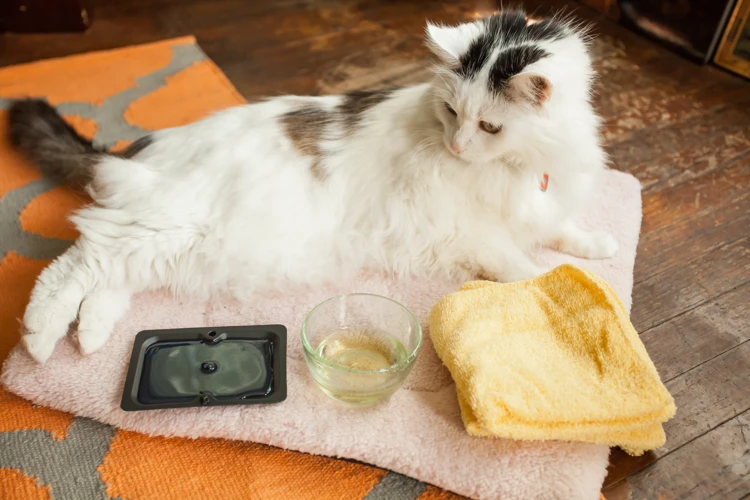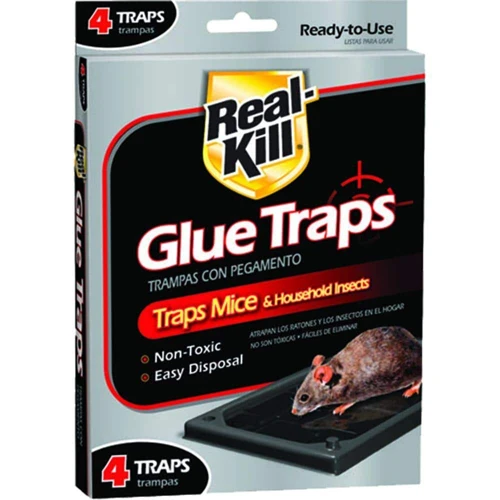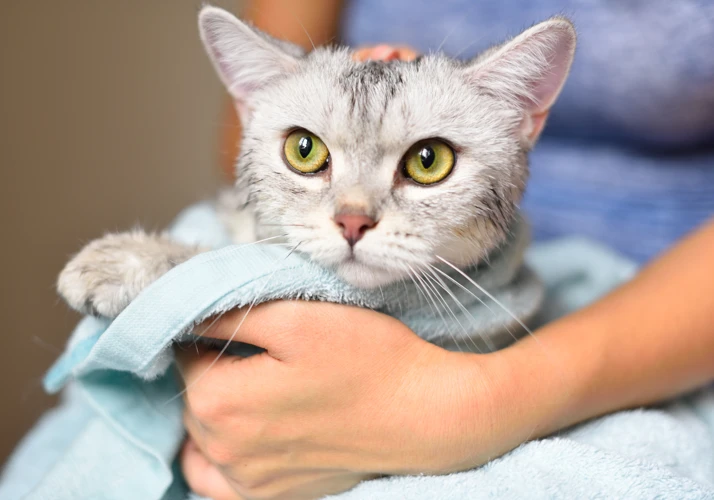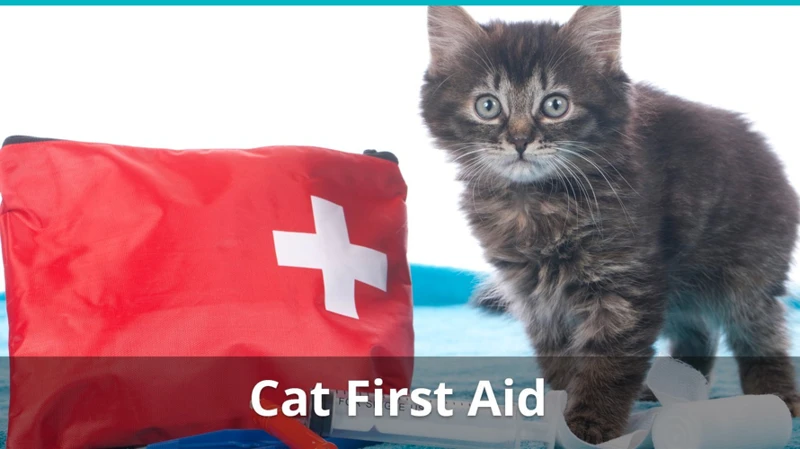As a cat owner, it’s not uncommon to encounter unexpected situations that require quick thinking and problem-solving skills. One such scenario is when your cat steps on a glue trap, leaving you with the dilemma of how to safely remove it without causing harm or distress to your furry friend. It can be a perplexing situation, but fear not! In this comprehensive guide, we will provide you with step-by-step instructions on how to get a glue trap off your cat’s paw. We’ll also cover why it’s important to remove it promptly, what tools you’ll need, and how to prevent future incidents. With this information at your fingertips, you can handle this situation with confidence and ease.
Why Should You Remove the Glue Trap from Your Cat’s Paw?
Why Should You Remove the Glue Trap from Your Cat’s Paw?
Glue traps, which are commonly used for pest control, are a serious hazard for cats. If the sticky glue trap gets stuck to your cat’s paw, the cat can become panicked and upset. In an attempt to free themselves, cats may end up causing serious injuries to their paws. If left unattended, the glue trap will continue to stick to the cat’s paw, causing further distress and possible infection. It is crucial to remove the glue trap from your cat’s paw as soon as possible to prevent any complications.
If you are facing a similar situation and need to remove glue from your cat’s paw, don’t worry! With a few simple tools and a little bit of patience, you can remove the glue trap swiftly and safely. In the next section, we will explore the tools you will need to keep nearby before starting the glue removal process.
To avoid facing such situations, pet owners should consider using pet-friendly and humane pest control solutions that do not involve the use of glue traps. You can also research eco-friendly alternatives that are safe for both your pet and the environment. Visit our article on how to remove mouse trap glue from carpet for more information on removing glue traps from different surfaces.
What Tools Will You Need to Remove the Glue Trap?
What Tools Will You Need to Remove the Glue Trap?
To remove the glue trap from your cat’s paw, you will need a few necessary tools. Here’s what you will need:
1. Petroleum Jelly or Cooking Oil: You will need petroleum jelly or cooking oil to break down the glue and make it easier to remove.
2. Scissors: A pair of scissors can help you cut off any excess glue-covered fur around your cat’s paw.
3. Paper Towels: You’ll need paper towels to dispose of the glue trap and clean up any leftover residue from your cat’s paw.
4. Gloves: Gloves will help protect your hands from the glue and any stress or injury your cat might cause.
You might also need a damp towel or cotton ball to clean your cat’s paw after removing the glue trap.
Note: Avoid using anything sharp on your cat’s paw to prevent further injury. If you don’t have the right supplies, you can purchase them at a local pet store or online.
If you’re having trouble removing the glue trap from your cat’s paw, you can consult other guides such as how to melt Krazy Glue or how to remove jewelry glue for additional tips on removing tough adhesives.
How to Remove the Glue Trap from Your Cat’s Paw
Removing a glue trap from your cat’s paw can be a stressful and challenging situation. It requires careful handling and a gentle approach to prevent injuries or further harm to your furry friend. However, with the right tools and techniques, you can safely remove a glue trap from your cat’s paw. In this section, we will guide you through the process step-by-step, using safe and effective methods. Before we begin, make sure you have all the necessary tools handy and your cat is calm and comfortable. As you follow these steps, remember to be patient and gentle with your cat to ensure a stress-free experience. If you’re ever unsure or feel uncertain about any step, seek help from a professional. Now, let’s get started!
Gather Your Supplies
To remove the glue trap from your cat’s paw, you’ll need some supplies. Here’s what you’ll need:
| Supplies | Description |
| Latex gloves | to protect your hands from any potential chemicals or irritants on the glue trap. |
| Cotton swabs | to apply the oil or grease to the cat’s paw. |
| Mineral oil or vegetable oil | to help loosen the glue’s grip on your cat’s paw. (source) |
| Petroleum jelly or butter | to help dissolve the glue. This can also help soothe your cat’s skin.(source) |
| Scissors | to cut away any excess glue, if necessary. |
| Tweezers | to help remove any remaining glue pieces. |
| Warm water | to help clean your cat’s paw. |
| Mild soap | to clean your cat’s paw gently. |
| Clean towel | to dry your cat’s paw after washing. |
Once you’ve gathered the necessary supplies, you can move on to preparing your cat for the removal process.
Prepare Your Cat
Once you have gathered all your supplies, it’s time to prepare your cat for the glue trap removal process. This step is crucial because cats can become stressed during the process, and the last thing you want is a panicked cat on your hands.
1. Calm Your Cat: Begin by speaking to your cat in a soothing voice. Offer treats or a favorite toy to help distract it from the task at hand. You may also need to seek the help of a friend or family member to hold your cat still while you remove the glue trap.
2. Gently Restrain Your Cat: Once you have your cat in a calm state, you will need to gently restrain it to ensure its safety during the removal process. You may consider wrapping a towel around your cat’s body to provide a sense of security, but make sure your cat can still breathe and see.
3. Protect Yourself: It’s crucial to protect yourself during this process as well. Wear gloves to protect yourself from the glue and any potential bites or scratches from your cat.
4. Don’t Rush: Take your time and work slowly and carefully. Rushing can cause additional stress for your cat and potentially worsen the injury.
By following these steps, you can ensure your cat’s safety and reduce the risk of any further damage or injury.
In case you need any tips on how to break wood glue bond or how to remove the glue from the fridge door, head to our website for more relevant information: https://www.example.com/how-to-remove-glue-from-fridge-door/.
Apply Oil or Grease
To safely remove the glue trap from your cat’s paw, the next step is to apply a substance that will dissolve the adhesive without damaging the skin. The best option for this is oil or grease, as they are known for their adhesive-releasing properties.
To apply oil or grease, follow these steps:
| Step 1: | Choose a safe and effective oil or grease: Some option include coconut oil, olive oil, vegetable oil, or petroleum jelly. Never use solvents or harsh chemicals such as acetone, rubbing alcohol, or gasoline as these can harm your cat’s paw. |
| Step 2: | Apply a generous amount of oil or grease to the affected area: Make sure to apply it evenly to ensure that it reaches all the adhesive surfaces on the cat’s paw. Use a cotton ball or a soft cloth to apply the oil or grease in order to avoid causing further pain to your cat. |
| Step 3: | Gently massage the oil or grease onto the adhesive: Allow the oil or grease to sit on the glue trap for at least 5 minutes. This will loosen the glue and make it easier to remove from your cat’s paw. |
If you have difficulty removing the glue trap from your cat’s paw after applying oil or grease, you can consult our article on how to break a wood glue bond. Also, if you need advice on how to separate wood glue, remove VCT Glue from concrete, or clean E6000 glue off rhinestones, we have articles dedicated to answering these questions.
Remove the Trap Material
After applying oil or grease to the glue trap on your cat’s paw, it’s time to remove the actual trap material. This step should be done carefully to prevent harming your cat.
First, hold your cat’s paw gently but firmly to prevent it from moving around too much. Then, use a pair of scissors or a razor blade to carefully cut away any excess glue trap material that isn’t softened by the oil or grease. Be sure to use caution when using sharp tools around your cat, as any sudden movements can cause injury.
Tip: If you’re having trouble cutting through the glue trap material, try using a bit of warm water to soften it up.
Once you’ve removed as much of the trap material as possible with the scissors or razor blade, switch to a soft cloth or cotton ball soaked in warm soapy water to carefully rub away any remaining glue residue. Work slowly and be patient, as pulling on the glue can be painful for your cat.
Important: Never pull the glue trap material off your cat’s paw forcibly, as this can result in torn skin and painful injury.
Once you’ve removed all of the trap material and glue residue, gently pat your cat’s paw dry with a clean towel. Your cat may be stressed or injured after the ordeal, so it’s essential to provide comfort and reassurance.
Tip: If your cat is still struggling to walk or appears to be in pain after removing the glue trap, take them to the vet immediately.
Internal link: Here is a helpful guide for removing VCT glue from concrete.
Clean Your Cat’s Paw
After removing the glue trap material, you will need to clean your cat’s paw thoroughly to ensure that there is no residual glue left on their skin. This step is crucial to prevent any discomfort or irritation for your furry friend.
Here are the steps to clean your cat’s paw:
| Step | Instructions |
|---|---|
| 1 | Apply a small amount of dish soap to your cat’s paw. |
| 2 | Gently massage the soap into their paw using a soft-bristled toothbrush. Be careful not to use too much pressure, so as not to cause any pain or discomfort to your cat. |
| 3 | Rinse your cat’s paw thoroughly under warm running water. |
| 4 | Dry your cat’s paw using a soft, clean towel. Be sure to pat their paw dry instead of rubbing it, as this could cause irritation. |
If you notice any remaining glue residue on your cat’s paw after cleaning, repeat the process until it is completely removed. It is also important to keep an eye on the affected paw for any signs of irritation or injury. If you notice any redness, swelling, or discharge, contact your veterinarian immediately.
Pro tip: If the glue is particularly stubborn and won’t come off with dish soap, you can try using coconut oil or olive oil to soften it. Apply a small amount to your cat’s paw and let it sit for a few minutes before gently wiping it away with a clean cloth or paper towel.
Remember, prevention is always better than cure! Ensure that your home is free of glue traps and other potential hazards to keep your feline friend safe and happy.
If you’re using wood glue for DIY projects, make sure to read our article on how to break wood glue bond or how to separate wood glue to prevent any mishaps with your pets. Conversely, if you happen to get E6000 glue on your rhinestones, check out how to clean E6000 glue off rhinestones for tips on how to remove it safely.
What to Do if Your Cat is Injured or Stressed
If your cat has been caught in a glue trap, it’s important to handle the situation with care. The first thing you want to do is assess your cat for any injuries. Check their paws and surrounding areas for signs of trauma or inflammation. If you notice any cuts, scrapes, or swelling, take your cat to a veterinarian as soon as possible.
It’s also important to keep in mind that your cat may be feeling stressed and anxious after being caught in the trap. They may be scared or uncomfortable with the removal process, so it’s important to approach them with caution and patience. Speak softly and reassure your cat that you will help them.
How to Soothe Your Cat
To help soothe your cat during the removal process, you can try using calming techniques. One option is to play soft, gentle music to help them relax. Additionally, you can use pheromone sprays or diffusers, such as Feliway, to help calm your cat.
Another option is to gently massage your cat’s head and ears. This can help release feel-good hormones and promote relaxation. Be sure to pay attention to their body language and stop if they appear uncomfortable or agitated.
When to Seek Professional Help
If your cat is severely injured or distressed, it may be best to seek professional help. Your veterinarian can safely remove the glue trap and provide any necessary medical treatment for injuries and stress.
It’s important to never attempt to forcibly remove the glue trap yourself. This can cause further harm and discomfort to your cat.
Final Thoughts
If your cat has been caught in a glue trap, it’s important to handle the situation with care and caution. Assess your cat for injuries and seek professional help if needed. Use calming techniques to soothe your cat, and never attempt to forcibly remove the trap yourself. With patience and care, you can safely remove the glue trap and help your cat recover from the ordeal.
Preventing Future Incidents: How to Keep Your Cat Safe from Glue Traps
Keeping your cat safe from glue traps is crucial for their well-being. Glue traps are typically used to catch rodents, but they pose a danger to pets and wildlife as well. Here are some ways you can protect your feline friend from getting trapped in these adhesives.
1. Avoid Using Glue Traps
The easiest way to protect your cat from getting trapped in a glue trap is to avoid using them altogether. Glue traps are inhumane and can cause unnecessary suffering to the animal. Instead, try using various non-toxic pest control methods like snap traps or electronic traps that capture rodents safely and without harming your pet.
2. Place Traps Strategically
If you must use glue traps, make sure you place them strategically to prevent your cat from getting stuck. Keep the traps in areas that are difficult for your pet to reach such as behind heavy furniture or in crawl spaces. Also, make sure you check the traps regularly and remove any rodents caught in them promptly.
3. Supervise Your Cat
Supervising your cat is an effective way to keep them safe from getting trapped in glue traps. Be aware of where your cat likes to play and do not keep any traps in those areas. If your cat is an outdoor pet, make sure they do not have access to areas where such traps have been placed by others.
4. Train Your Cat
Training your cat to stay away from certain areas of your home can be a great way to prevent them from getting caught in glue traps. You can also train your cat to avoid any traps by associating them with negative experiences like loud noises or a spray of water.
5. Check Labels
When purchasing any pest control products, remember to check the label. Look for products that are non-toxic and safe for pets. You can also consult your veterinarian for their recommendations on pet-friendly pest control products.
By following these tips, you can protect your cat from getting trapped in glue traps and ensure their safety. Remember, prevention is key to keeping your feline friend happy and healthy.
Conclusion
In conclusion, removing a glue trap from your cat’s paw may seem like a daunting task, but with the right tools and technique, it can be done safely and effectively. Remember to always prioritize your cat’s safety and comfort throughout the process.
Make sure to gather all necessary materials, including a rag or paper towel, cooking oil or grease, and scissors. It’s also important to prepare your cat by calming them down with gentle words and petting, and having another person on hand to help if needed.
Once you’ve applied the oil or grease to the affected area, slowly and carefully remove the glue trap material from your cat’s paw using scissors or your fingers. Remember to take breaks and give your cat plenty of rest if they become stressed or agitated.
In order to prevent future incidents, it’s important to avoid using glue traps altogether and instead opt for alternative methods of pest control. This can include sealing up any potential entry points for pests, using natural repellents, and keeping your home clean and free of food debris.
Finally, if you notice any signs of injury or distress in your cat, seek veterinary care immediately. With care and patience, you can safely remove a glue trap from your cat’s paw and keep them healthy and happy.
Frequently Asked Questions
1. Can glue traps be harmful to cats?
Yes, glue traps can cause harm to cats by trapping their paws and fur and causing distress. The glue on the traps can also cause skin irritation and inflammation on a cat’s paw, leading to infection.
2. Can I use scissors or other sharp objects to remove the glue trap from my cat’s paw?
No, using sharp objects on your cat’s paw can lead to injury and further distress. It’s best to stick to safe and gentle techniques, like using oils and grease, to remove the glue trap.
3. How long can a glue trap stay stuck to a cat’s paw?
This can vary depending on the strength of the glue used on the trap and how sticky it is. Some glue traps may come off more easily, while others may require more effort to remove.
4. Can I use any type of oil or grease to remove the glue trap from my cat’s paw?
It’s best to use vegetable, coconut, or olive oil to remove the glue trap from your cat’s paw. Avoid using petroleum-based products, as these can be harmful to your cat.
5. Should I take my cat to the vet after removing the glue trap from their paw?
If your cat is showing signs of discomfort or has a swollen paw after removing the glue trap, it’s best to take them to the vet for a check-up. They may need antibiotics to treat any infection that has developed.
6. What can I do to prevent my cat from getting stuck in a glue trap?
You can use alternative pest control methods, such as humane traps or natural repellents. You can also keep your cat indoors or supervise them carefully when they are outside to reduce the risk of them coming into contact with glue traps.
7. Can I reuse a glue trap?
No, glue traps are meant to be used once and then disposed of. Reusing a glue trap can lead to a lower success rate in catching pests and can also increase the risk of harming animals.
8. Will my cat hold a grudge against me for removing the glue trap from their paw?
No, cats may be a bit wary or wary of you immediately after the incident, but with love and care, they will quickly return to their normal selves.
9. Can I use warm water to remove the glue trap from my cat’s paw?
No, warm water can make the glue more sticky, making it harder to remove. Stick to using oils and grease to gently remove the glue trap from your cat’s paw.
10. Can glue traps harm other household pets, like dogs?
Yes, glue traps can harm other household pets, such as dogs, if they come into contact with them. It’s best to research alternative pest control methods that are safe for all of your pets.



